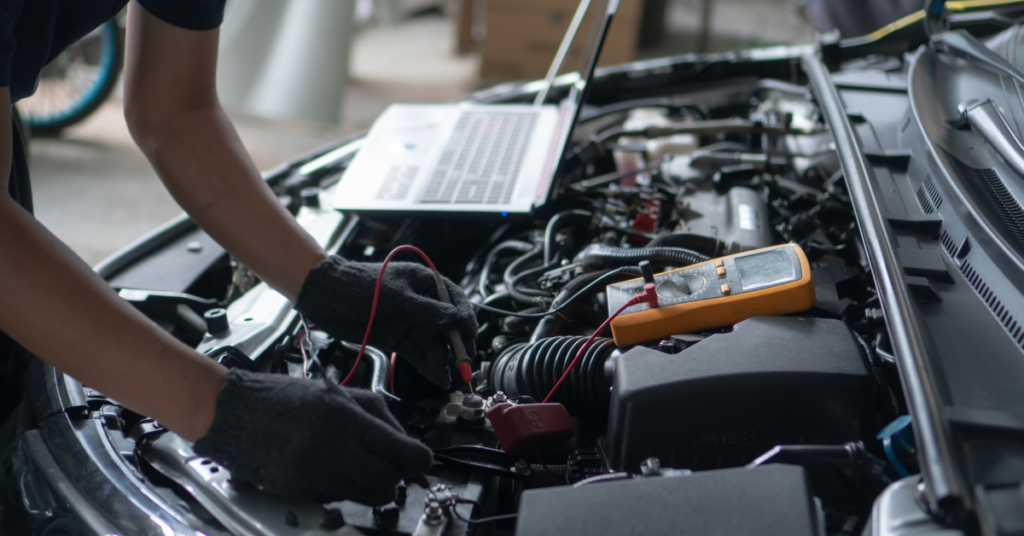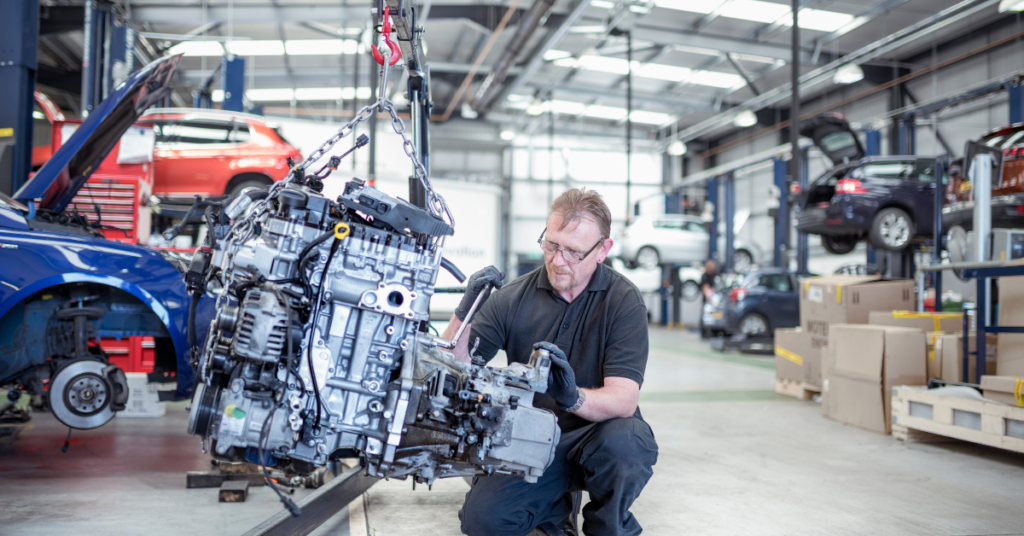
The transmission mount plays a crucial role in ensuring the smooth operation of a vehicle’s transmission system. Its main function is to connect the transmission to the chassis of the vehicle, providing support and absorbing vibrations.
However, when the transmission mount becomes worn-out or faulty, it can lead to various issues, including hard shifting.
In this article, we will explore the relationship between a bad transmission mount and hard shifting, its underlying causes, and the potential consequences.
Contents
Understanding Transmission Mounts
Before delving into the effects of a bad transmission mount, let’s briefly understand its purpose. A transmission mount is a component made of rubber and metal that holds the transmission in place within the vehicle’s engine bay.
Its primary role is to prevent excessive movement of the transmission, reducing stress on the drivetrain and other related components.
Can a Bad Transmission Mount Cause Hard Shifting?
A worn-out or damaged transmission mount can contribute to hard shifting in several ways:
Misalignment
When a transmission mount is faulty, it may cause the transmission to become misaligned with other components such as the engine or driveshaft. This misalignment disrupts the smooth operation of the transmission, resulting in hard shifting.
Proper alignment between the transmission and other parts is essential for seamless gear engagement.
Excessive Movement
As the transmission mount loses its ability to provide stability, the transmission may experience excessive movement during gear shifts. This movement can prevent the gears from engaging properly, leading to hard shifting.
The transmission mount acts as a buffer, preventing unnecessary movement and ensuring smooth gear transitions.
Increased Vibrations

A worn-out transmission mount fails to effectively dampen vibrations, causing them to transfer to the transmission system. These vibrations interfere with the smooth functioning of the gears, resulting in hard shifting.
The transmission mount should absorb and minimize vibrations to maintain optimal gear performance.
Damaged Linkages
In some cases, a faulty transmission mount can cause damage to the linkages connecting the transmission to other components. This damage can affect the synchronization of gears and result in hard shifting.
Proper functioning of the linkages is crucial for seamless gear changes.
Signs of a Bad Transmission Mount
Recognizing the signs of a bad transmission mount is vital to prevent further damage to your vehicle’s transmission system. Here are some common indicators to watch out for:
Excessive Vibrations
If you notice unusual vibrations or shaking in your vehicle, especially during acceleration or gear shifting, it could be a sign of a worn-out transmission mount. These vibrations indicate a lack of stability and proper cushioning.
Clunking Noises
A faulty transmission mount can produce clunking or banging noises, particularly when shifting gears or changing between drive modes. These noises indicate a lack of proper support and alignment.
Visible Damage
Physical inspection of the transmission mount may reveal visible signs of wear and tear, such as cracks, tears, or sagging. These visible damages indicate a weakened transmission mount that needs attention.
Engine Movement

While observing the engine bay, if you notice excessive movement of the engine during acceleration or gear changes, it might indicate a problem with the transmission mount.
Proper support and stability are essential for smooth engine operation.
Hard Shifting
The most apparent sign of a bad transmission mount is experiencing hard shifting. If you find it difficult to shift gears smoothly, or the gear engagement feels rough, it could be due to a faulty transmission mount.
Prompt action is necessary to prevent further damage to the transmission.
Consequences of Ignoring a Bad Transmission Mount
Ignoring a bad transmission mount can have severe consequences for both your vehicle and your safety. Failing to address the issue in a timely manner can lead to:
Transmission Damage
Continuous hard shifting due to a faulty transmission mount can cause premature wear and tear on the transmission gears, synchronizers, and other related components.
This can result in costly repairs or even the need for a complete transmission replacement. Proper maintenance and repair are necessary to prevent extensive damage.
Drivetrain Issues
The excessive movement caused by a worn-out transmission mount can impose additional stress on other drivetrain components, such as axles, driveshafts, and CV joints. This increased stress can lead to premature failure of these parts, requiring expensive repairs.
A well-functioning transmission mount ensures the longevity of other drivetrain components.
Reduced Vehicle Performance
Hard shifting can negatively impact the overall performance of your vehicle. It can result in decreased acceleration, reduced fuel efficiency, and a generally rough driving experience.
Maintaining a healthy transmission mount contributes to optimal vehicle performance.
Safety Risks
A malfunctioning transmission can compromise your safety on the road. If gears fail to engage properly or shift unexpectedly, it can lead to loss of control, potential accidents, or dangerous situations.
Prioritizing the repair of a bad transmission mount ensures a safe driving experience.
Addressing the Issue
If you suspect a bad transmission mount is causing hard shifting in your vehicle, it is crucial to address the problem promptly. Consulting a professional mechanic or a transmission specialist is highly recommended.
They will be able to thoroughly inspect your vehicle, diagnose the issue accurately, and provide the necessary repairs or replacements. Proper expertise is essential to ensure the correct resolution of the problem.
To prevent future transmission mount issues, consider the following preventive measures:
Routine Inspections
Regularly inspect the condition of your vehicle’s transmission mount during routine maintenance checks. Look for signs of wear, damage, or excessive movement. Early detection can prevent further complications.
Quality Replacement Parts
When replacing a faulty transmission mount, opt for high-quality parts that meet or exceed the manufacturer’s specifications. This ensures durability and longevity.
Using reliable replacement parts contributes to the overall performance and lifespan of the transmission mount.
Proper Installation
Ensure that the new transmission mount is installed correctly, following the manufacturer’s guidelines or professional recommendations. Proper installation guarantees optimal functionality and stability.
Driving Habits
Practice smooth and gentle shifting techniques to minimize stress on the transmission system. Avoid sudden acceleration or harsh gear changes whenever possible.
Responsible driving habits contribute to the longevity of the transmission mount and the overall health of the transmission system.
By taking these precautions, you can help maintain the integrity of your vehicle’s transmission mount and minimize the risk of future hard shifting issues.
Conclusion
In conclusion, a bad transmission mount can indeed cause hard shifting. It is essential to recognize the signs of a faulty transmission mount and address the issue promptly to avoid further damage to your vehicle’s transmission system.
Regular inspections, quality replacement parts, proper installation, and responsible driving habits are key to preventing transmission mount-related problems and ensuring a smooth and safe driving experience.
FAQ
1. Can a bad transmission mount cause hard shifting?
Yes, a bad transmission mount can cause hard shifting. It can lead to misalignment, excessive movement, increased vibrations, and damaged linkages, all of which disrupt the smooth operation of the transmission, resulting in hard shifting.
2. What are the signs of a bad transmission mount?
Some common signs of a bad transmission mount include excessive vibrations, clunking noises, visible damage (cracks, tears, sagging), engine movement during acceleration or gear changes, and experiencing difficulty in shifting gears smoothly.
3. What are the consequences of ignoring a bad transmission mount?
Ignoring a bad transmission mount can lead to transmission damage, drivetrain issues, reduced vehicle performance, and safety risks.
Continuous hard shifting can cause premature wear and tear on transmission components, additional stress on drivetrain parts, decreased acceleration and fuel efficiency, and potential loss of control on the road.
4. How can I address the issue of a bad transmission mount?
If you suspect a bad transmission mount, it is important to consult a professional mechanic or transmission specialist. They can accurately diagnose the issue, provide necessary repairs or replacements, and ensure proper resolution.
Routine inspections, using quality replacement parts, proper installation, and practicing smooth driving habits can also help prevent future transmission mount issues.



